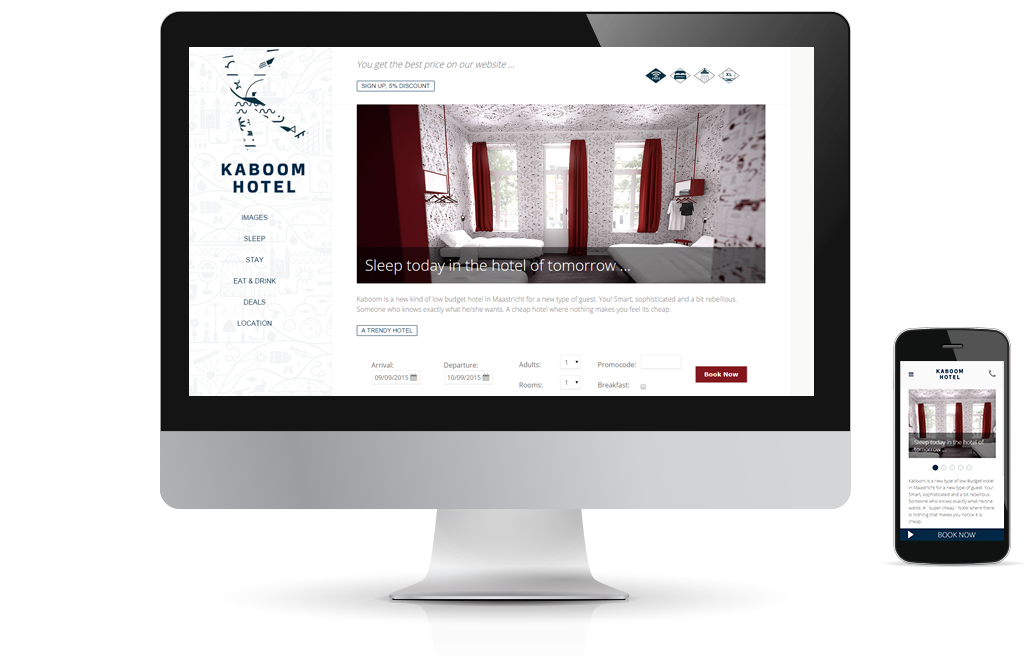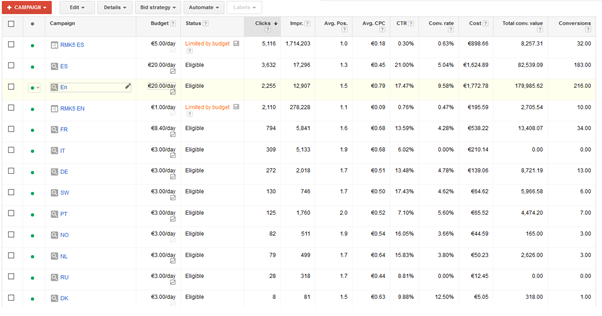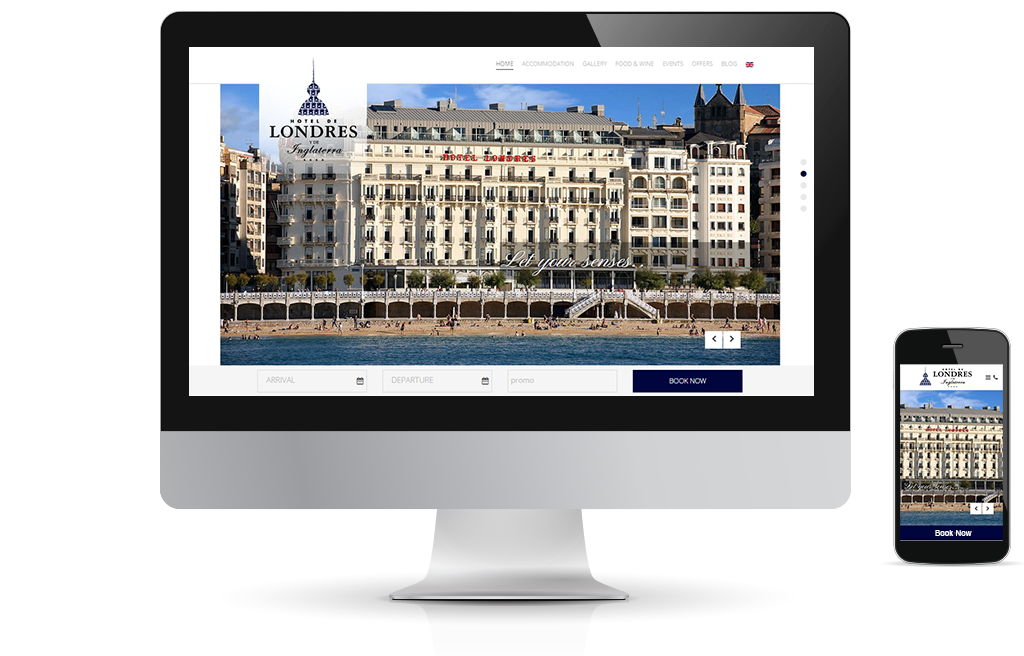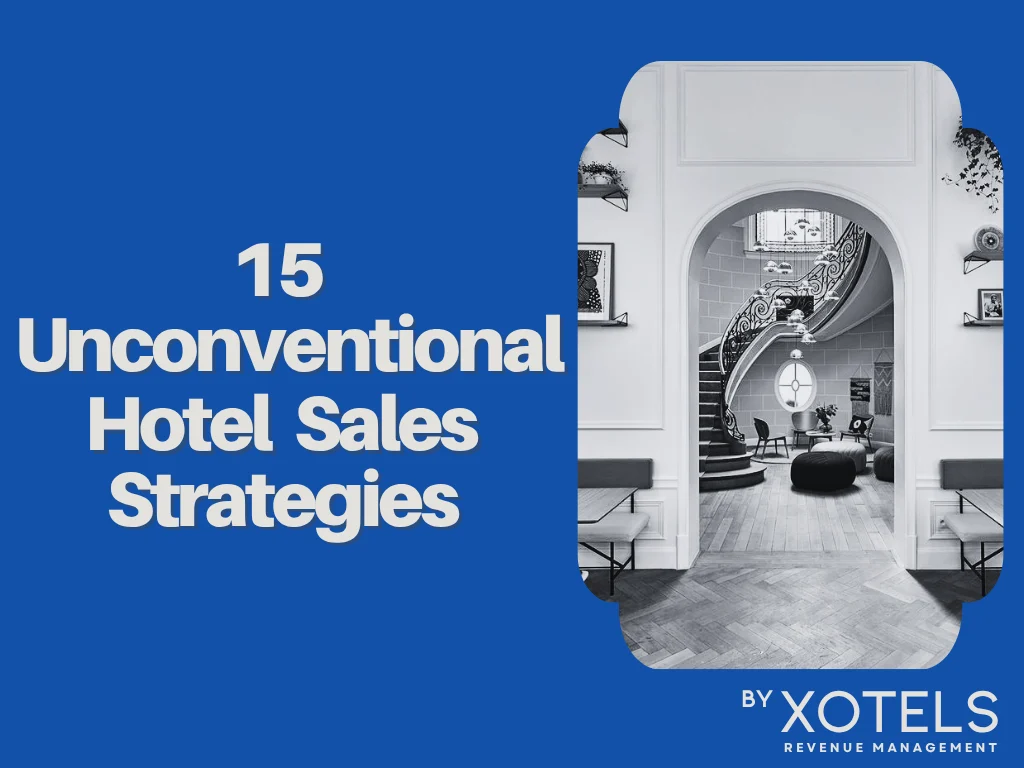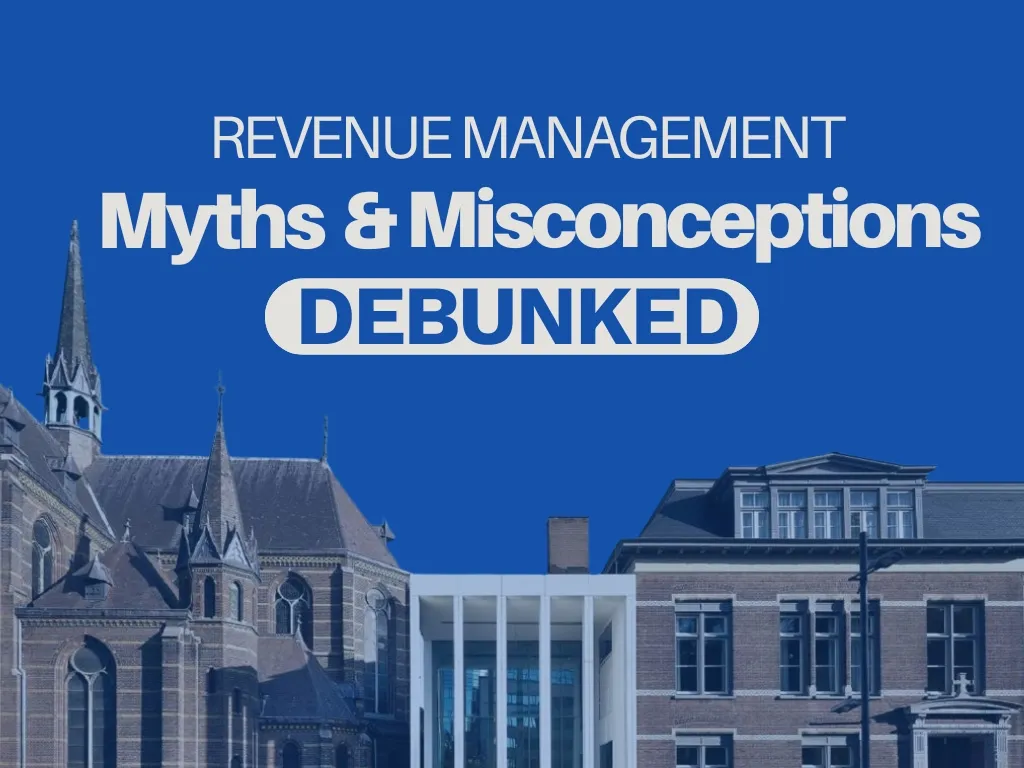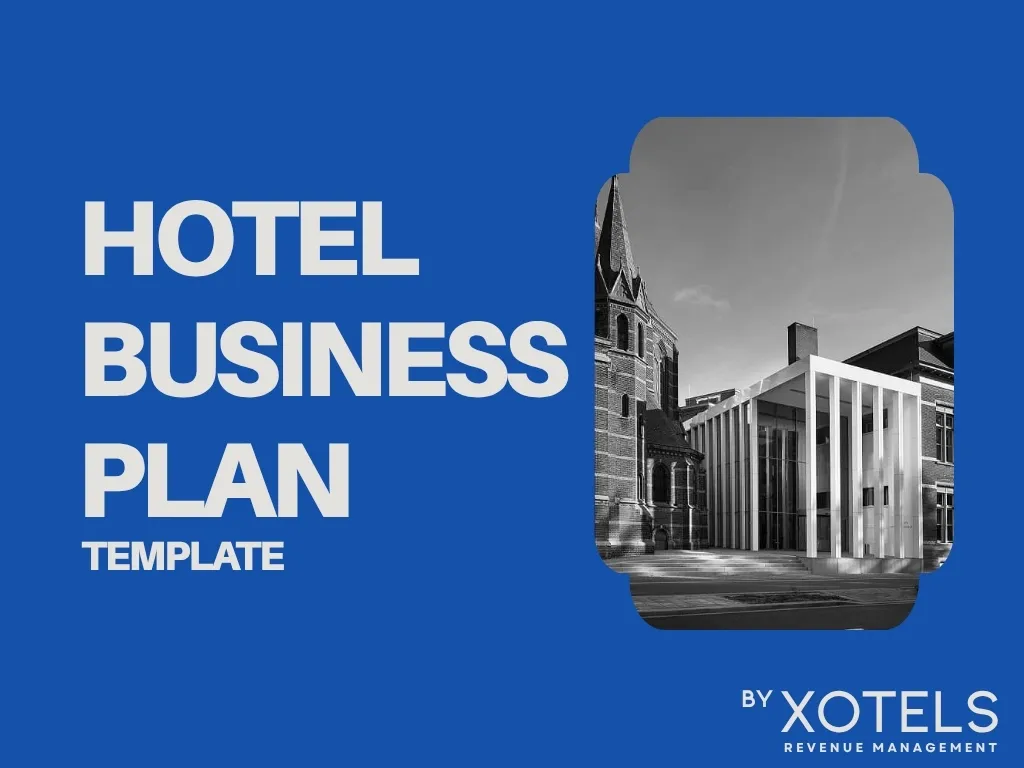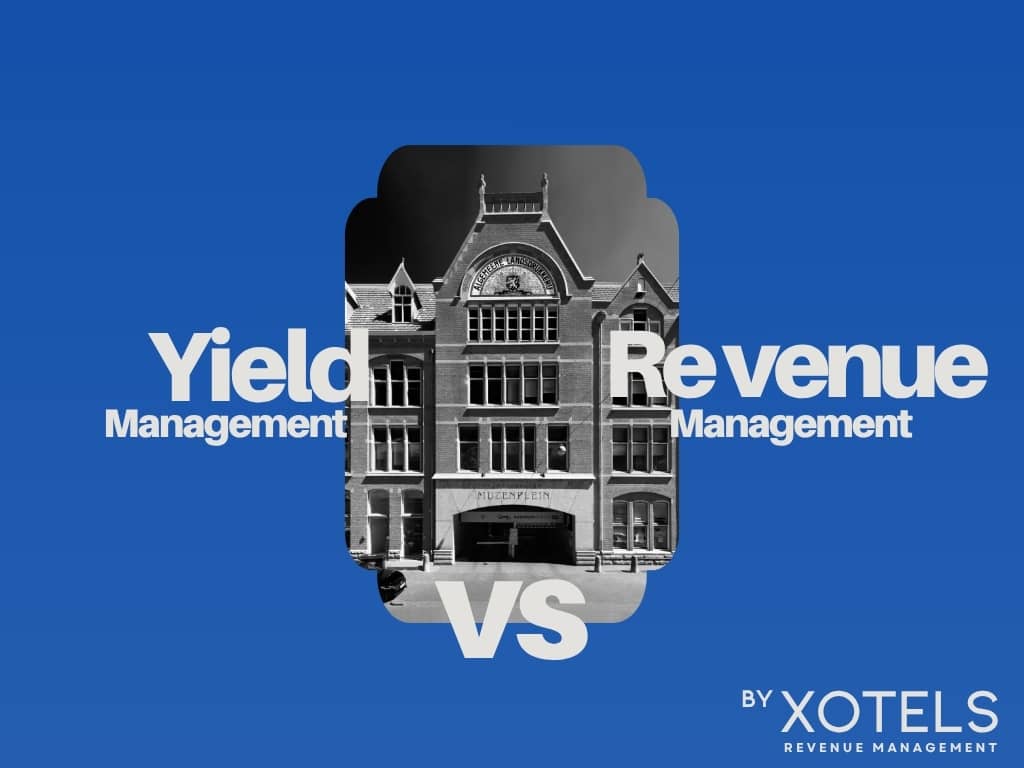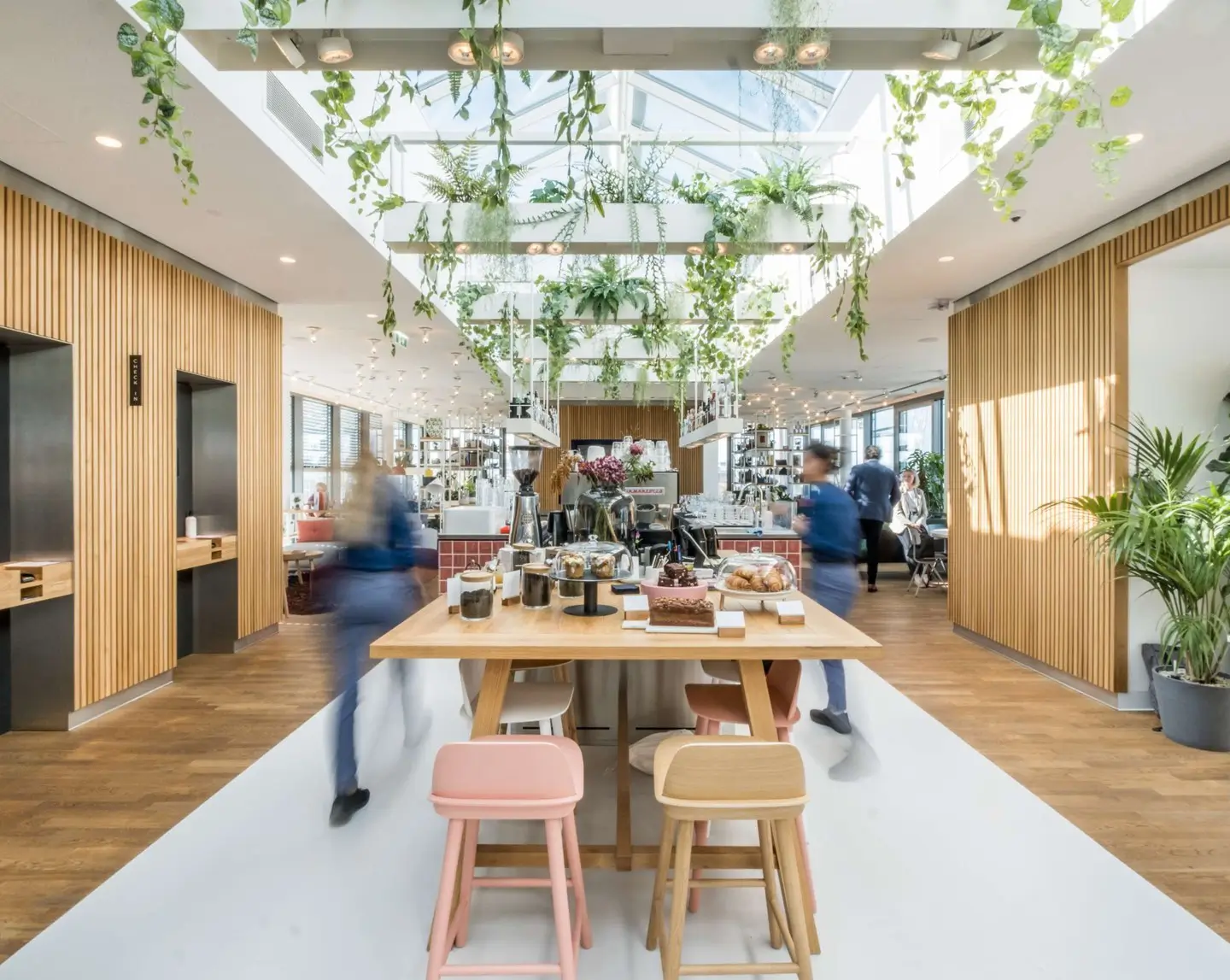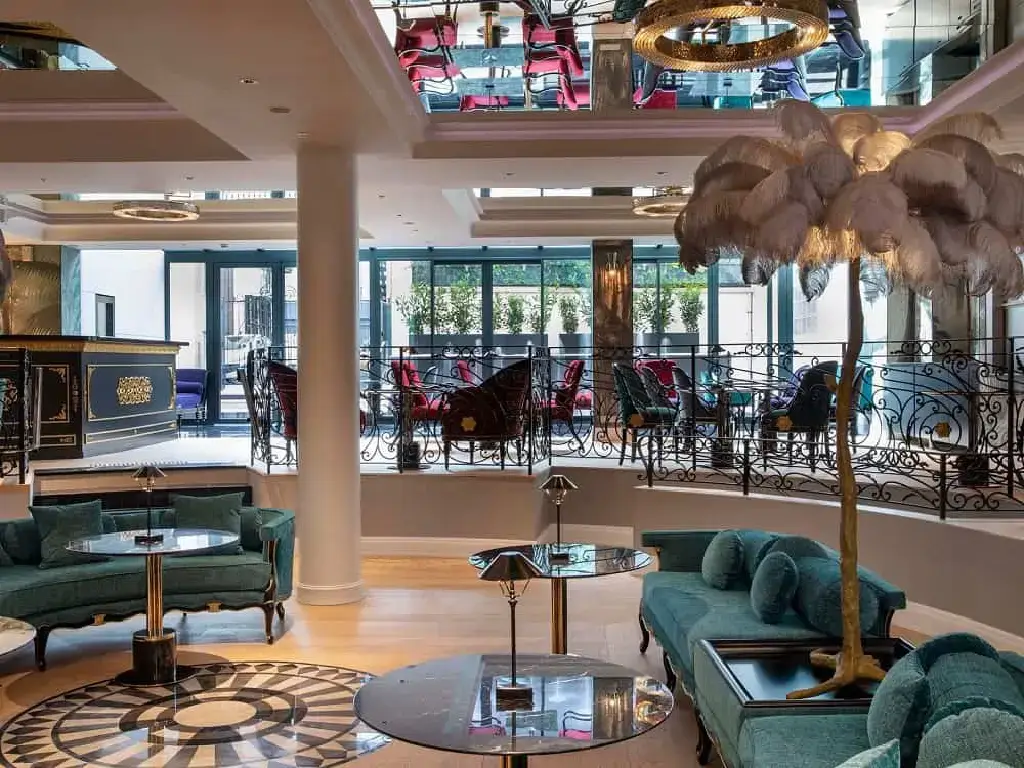Hotel Internet Marketing Plan & Online Strategies – Part 2
In Part 1 of our hotel internet marketing plan we ended talking about brand protection to drive direct sales. Another method that can be used and is very effective is PPC advertising in search engines, also called SEM, or Search Engine Marketing.In Part 1 of our hotel internet marketing plan we ended talking about brand protection to drive direct sales. Another method that can be used and is very effective is PPC advertising in search engines, also called SEM, or Search Engine Marketing.
SEM drives high ROI through Brand Protection
As most of you will undoubtedly know you can bid on keywords searches in Google, Yahoo, Bing and other search engines. Ad’s appear above the natural search results in the SERPs, as well as below. The positions at the top and the bottom of the search engine pages get premium visibility hence you can bid on them via a PPC (pay per click) model.
Of course this type of online or digital marketing is highly competitive and thus costly. So where is the cream on top of the cake when it comes to SEM?
Very close to home actually. Bidding on your own brand name, is considered a very effective form of brand protection, and generates the highest levels of ROI.
Brand protection by denouncing Trademark offences works on the EU continent, but unfortunately the trade protection laws in the UK, US, and the rest of the world, leave a lot to be desired. There it’s a free game for the OTA. So as a part of your agreement you need to ensure that they are not allowed on your trademarks (or any deviation from it).
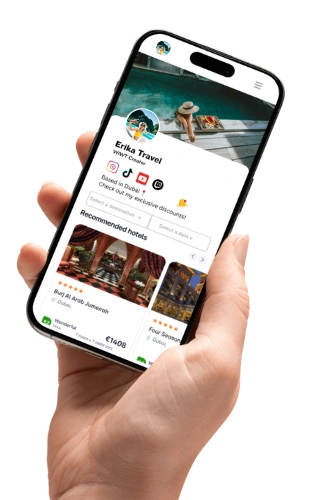

SELL MORE HOTEL ROOMS
SELL MORE HOTEL ROOMS
via the WIWT Affiliate Network.
via the WIWT Affiliate Network.
Still, unfortunately OTA do not seem to respect this …. Hence you should also be advertising on the brand… your own brand …
You should be bidding on your own brand name / trademark via Google Adwords, as well as Yahoo and Bing’s advertising platforms, in the same way the OTA are. The price on this is much lower than short tail destination keywords, and it delivers a very good return on investment.
ROI’s we are achieving with our clients hoover between 35 times to 15 times, which matches a % cost between 2.8% and 6.7%. This is way more attractive than 15% to 25% OTA commission.
Below some practical tips to get you on your way:
- Target generally speaking languages instead of territories
- Target as many languages as possible, each of them with a dedicated ad in that particular language. It doesn’t matter if your website is not translated in that language, just redirect users to the English version of the website. Having ads in specific languages will help the CTR (click through ratio).
- When defining the keywords use the keyword modifiers. Broad match is sometimes too broad and will pick up generic keywords for the destination that usually does not convert well. With Broad match modifier Ads may show on searches that contain the modified term (or close variations, but not synonyms), in any order: +El Moulí
- Monitor the keywords that are being picked up and add negative keywords if you don’t want your ad appear for a particular word.
- In some cases, you might have a brand name already used by other hotels, for example “Ambassador”. In this case we recommend to have a look into your target markets and eventually exclude locations that do not belong to these (to control your cost). Also make sure you include your specific location so people know it’s your hotel
- Include a call to action in all your ads such as ‘book now’.
- Add sitelink extensions to your ads as well as location extensions and phone extension in order to fit as much space as possible on the page.
Re-Marketing to Drive Conversion
If you have visited our website before I am sure you know what I am talking about. You will see our logo and advertising banners all over the internet to remind you that we actually do more than blogging. We actually sell revenue management technology and yield consulting services.
And if this is your first time, you will be sure to find out soon ;-) …
This form of marketing is called remarketing. It allows hotels to bring back people to their website that have not booked yet. Your ads are placed on news or community websites, as a friendly reminder about your hotel as travelers doing their research process.
The fun part of this is that the ROI is very good compared to OTA commissions. And this is of course logical as we are marketing to people that have already visited your website before, so naturally the chance of conversion is higher.
And that’s really what remarketing is all about, increasing your conversion, an easy way to drive your direct sales…
Here some easy to implement action steps:
- Create segments into Google Analytics, according to users that did visit your first step of the booking engine but didn’t convert. Segments could be language oriented, or based on particular promotional or package pages which visitors to your website viewed.
- In Google Analytics go to admin – audience definition – audiences – new audience – import segments and select the segment you just created. When you create a Remarketing Audience in Analytics, it is then available in the Google Adwords account you selected.
- Now go to Google Adwords (note: your google adwords and google analytics accounts should be properly linked) and create a new Display Network only campaign – Choose how to target your ads: Interests & remarketing – select a category: remarketing lists – Pick your audience.
To give you an idea below a screenshot from Google Adwords from one of our hotel clients of the first semester of 2016:
As I said, returns are very high, for instance with our English branded adwords campaign we generate in revenue €179,985 with an investment of only €1,772. So you would be foolish not to do this.
As you can see we are trying in many languages to see which ones particularly can generate traffic, and which can convert better. It helps us as well to better understand which languages we should translate the site in for instance …
Meta-Search Marketing gives you direct visibility with consumers
A year ago, I was much more enthusiastic about meta-search marketing than now, as I see in which direction it is going.
ROI used to be 10 times or much better even, keeping distribution cost below 10%. That was still a substantial discount OTA commissions. Unfortunately, it seems costs in this are steadily increasing and the advantages that meta-search brought us in the beginning is slowly eroding. Their cost is creeping up to the same levels OTA commissions are at. Not the most attractive outlook.
I fear hotels will start looking for other areas to spend their precious marketing dollars eventually … It is probably time for a new disruptor in this field … to turn the table upside down ….
That said for some hotels metasearch still pays off tremendously well (and this is really on a case by case basis).
Oh yes before I forget, what is meta-search? These are price comparison websites that compare (real-time) prices of hotels. The major players are Kayak, Trivago, HotelsCombined, HipMunk, SkyScanner and of course TripAdvisor (yes they are no longer just a review website). And yes let’s not forget Google HPA or HotelFinder of course. Consumers can see straight away where to find the best rate for your hotel.
With the coming of the mega price comparison websites, hovering above the OTA, it has become impertinent for hotels to get a solid control over their wholesale rates. Unfortunately, too many FIT rates (destined for packages) are being marked up and offered online on proxy-OTA or via affiliate models. This can seriously damage the public (BAR) pricing strategy of your hotel.
So don’t give FIT to far of a discount. Or as we do, we mark them up an extra 10% to 15% in our channel manager, so that these proxy-OTA can’t undercut your BAR rates. You could of course chase your FIT and Wholesale partners, but who has time for a constant cat and mouse game? Better put this energy somewhere else so you can achieve even more …
So now that you have your rate parity back in line, it is interesting to see that you can go head to head with the OTA directly on the Meta-Search website. You can put your price next to the OTA and compete like for like.
As mentioned ROI is still healthy for some hotels. But this is not consistent across the board. For some of our better performing hotels we are generating between an 8 to 12 times return on investment (12.5% to 8.3% cost). Getting below this is extremely difficult and really depends as well on the average reservation value of your hotel.
Below a screenshot with a sample of the ROI we are achieving with one of our hotels in Spain.
But we do see the cost % of these channels steadily increasing. And if it continues, like this we would soon consider them to be just another OTA channel, and no longer as an alternative to attract direct sales for hotels.
Playing with Pricing and Packaging
When looking at pricing there are some more easy ways to get travelers to book directly on your brand.com hotel website.
Extra Discounts help to pull in those with doubts
You could offer membership discounts for instance. OTA are doing this actively, and so should you. Below some ideas that are working very well for our hotels:
- A 5% discount code for people that sign-up to be a member to receive your newsletter
- 10% discount code for repeat guests
- Optimized landing page with a 5% discount code for people who are searching on Google actively for a discount at your hotel.
As long as it is presented as a membership rate, there is nothing the OTA can say. They are doing exactly the same. In return for people signing up, and becoming a member, you provide them with a discount code.
Besides a membership discount, you could also advertise a discount via remarketing to people who have visited your website and not yet booked. So if they looked at the 5% discount page, and went into the booking engine, and did not book directly you can serve them a remarketing advertising banner, with a 10% discount a few days later.
It helps pulling those who have not yet made their mind up across the line.
It’s logical, no? If you tell people if they join the club, they will get a better rate than elsewhere. And be sure to include calls to action and urgency into your messaging for the best possible effect.
One tip however: When juggling with discounts, try to avoid using a ‘subscribe’ field. Today’s travelers are looking for instant value. When booking they don’t really care about future discounts. They seek answers NOW. Therefore, it’s better you send them straight to a hidden page with current offers. Prepare a link that sends the visitor to the booking engine with the already incorporated discount code. That way your rates are not public and searchable and you can outmaneuver the rate parity restrictions.
If discounts are instant, this can really work well for your hotel. In most of our hotels we are actually generating around 40% of website sales with discount codes.
Experiences Sell, Package It Up
On OTA hotels are being marginalized to a commodity. They sell rooms and rates. Nothing more, nothing less. So on your own hotel website you need to really put the uniqueness of your hotel in the spotlight. When potential bookers visit your myhotel.com website they need to feel they are truly experiencing your hotel. But it is not just the hotel they should experience, they should also live a sensation of what it would be like to visit your destination.
You should create niche products that cater to the different client segments or target markets. In the hotel industry we commonly refer to such products as packages. I am sure you are familiar with this.
To give you a clearer idea of what I mean by reaching different target markets, let me use as example a hotel website we are currently working on for a hotel in Barcelona. At this hotel we target various different kind of travelers, and have put together packages that meet their individual needs:
- Weekend Break
- Summer Vacation
- Spa Offer
- Romantic Escape
- Pre-Cruise Package
- Cruise & Parking Offer
- Barcelona with Family / Kids
As you can see we are clearly targeting different consumer niches with these tailored hotel packages and offers.
Note: This also ties in closely to the SEO section of our hotel marketing plan described in Part 1.
Push Occupancy during Low Demand with Campaigns
Create an interesting concept and an offer they can’t refuse. You could create a sense of urgency, like a limited-time offer, which is likely to help gain attention quickly and make users act right away. Use technology, engaging pictures & messages and great content to motivate readers to make a booking.
Find innovative ways to capture the attention of your target audience. Identify what is relevant for them? What are their passions? What are they saying about your destination? Find ways to integrate that messaging into your campaign.
Using the urgency message to book before a set deadline to get access to a special deal, will help increase the lead time with which people book your hotel.
Example: In one of our hotels we are actually launching a Christmas promotion to come over to our destination for Christmas shopping. The promotion includes a bottle of champagne in the bar upon arrivals and some cute gifts in your room and a local souvenir to take home. We have set a deadline of October 31st to create a sense of urgency, to be able to book this sharply discounted offer, which is only available on the direct website of the hotel.
The offer will be not only featured on the hotel website, but it will be supported with emailing campaigns to our customer databases, as well as PPC advertising and diffusion via social media platforms. As you can see, a full cross-channel marketing campaign to drive more direct sales.
We are now brainstorming on how to add on a kind of competition or contest on best guest picture taken and posted on our social media pages, and tagged with a designated has #hashtag to create more brand awareness for our hotel(s). Of course with a prize to be won, a free weekend …
Incentivize direct bookings by doing good
Take a philanthropic approach to direct bookings and instead of offering discounts (for example if you don’t want to ‘cheapen’ your hotel because your USP is ‘luxury’) engage the customer into contributing. With every stay booked directly on your hotel website, donations for a good cause can be made. By ‘feeding the hungry’ you feed your image and by ‘saving the world’ you save your hotel from OTA-dependency!
I could see this to work over the Christmas season. When people are in a generous mood and seem to like donating more to the poor than in other seasons. Donate 1% of direct booking revenue to the red cross or the local shelter for instance.
Trigger Guests to Push Up Conversion
Keep in mind that guests sometimes need a little ‘push’ to book. There is nothing wrong in sending them little signals to catch their attention and to remind them about your amazing property! You can use different tools to convince your visitors to book directly on your hotel website.
What can be that attention-catcher to increase your conversion rate?
A very useful and powerful tool are Message Pop-ups. OTAs are using them frequently on their website, use them as best practice, learn from them and use them on your website too. Include clever notifications which pop-up in the ‘right moment’ based on the algorithm of visitors’ behavior. Send a relevant notification, which will appear on the screen.
For example, during the research session of a potential guest on your website, capture his attention and increase the urgency to book directly by sending a triggering message that this hotel room is the most available one, that there are so and so many people looking at this room right now, that the guest will receive a discount or a gift voucher for this booking etc.
You can then send a promo-code to the guest via mail or direct him to a hidden page with private discounts. You can use the momentum to ask the customer for their preferred stay month. That way you keep a record of when to send direct marketing emails with discounts to this client.
You should also capture the attention at the exit of your website. Convince your leaving visitors with one last message. An Exit Capture message will appear when travelers attempt to leave your website. Here again you can not only incentivize to book but also reach out and ask the visitor for the preferred stay month (to send him future discount codes). You can use the Exit Capture tool within the booking engine!
So called ‘Basket Recovery’ is also a popular technique. It means basically that you follow up with all the guests who started a booking process but didn’t finish it (for whatever reason). You send them a reminder to go back to your website and finish the booking, maybe incentify them with a discount or an upgrade.
You can set up a specific audience targeting element to customize your messages and make them more relevant. The targeting can be done not only for users exiting the website but also ‘filtered’ by geographical segmentation, by visitors coming from specific websites, by the time spent on your website or by returning visitors.
We are currently conducting extensive testing in this area. First results look promissing. We will update you on the outcome in Q1 of 2017.
Update December 15, 2016: First results from our A/B Testing shows a 14% to 20% increase in web revenue within a period of 3 weeks.
Why Pay so much in Commissions?
Investing in Direct Marketing gives a Higher GOP
Now let’s have a look at numbers, Key Performance Indicators and Commissions…
It seems that many hoteliers don’t realize that direct bookings are more cost-effective then the distribution via the OTAs. Diverse marketing campaigns to drive direct bookings may look at first sight as more high-priced and perceived as a ‘luxury’ spending…The ‘expense side’ of the budget is frequently discussed, expenses are scrutinized and often it is the marketing budgets which are cut short.
OTA-commissions on the other side are declared as ‘travel agent commissions’ in the hotels financial statement. Cost of Distribution is not fully accounted for in many hotels Profit and Loss statements, but are deducted from gross room revenue. In particular merchant model distribution costs are not transparent, and there is no budgetary limitation to them. It is almost like ‘they have the right to exist’ and are not restrained in any way by the property budget… and therefore can grow exponentially!
Many hoteliers also dread to invest substantially in marketing, as this is a tangible expense that needs to be spent up front. Commissions of OTA are not noticed till upon reconciliation of the financial data, and the invoice comes in. But this is after the fact.
The OTA commissions and its lack of transparency is often misunderstood, or even ignored. This is concerning!
But what if you can get lower cost of distribution by investing in marketing than paying OTA commissions? Who would you not want to invest in digital marketing to get a better bottom line result for their business?
Yes, a hotel is a business and should strive for optimal results. So please don’t forget that we can also sell successfully our own products. As in the end the rooms belong to the hotels.
The OTA’s are merely one of the channels to use, but not the sole focus. If you leave it up to them too much, you will simply see them raise their commissions over time. Strategically investing in digital marketing will keep a balance in the market and the OTA at check.
Don’t put all you eggs in basket is a sound advice here …
Speaking about Distribution Costs …
When evaluating and analyzing the financial aspects and the KPI’s hoteliers should not only pay attention to RevPAR. We are using the following two key performance indicators to keep ongoing insight in our hotels distribution cost.
- NRevPAR
- ProfPAR
NRevPAR, similar to RevPAR goes even one step further and subtracts the distribution costs (transaction fees, travel agency commissions, marketing spending, etc) which is absolutely necessary for effective measurement of a property’s revenue management strategies. Factoring the cost of distribution into its calculation gives you a more transparent performance indication.
ProfPAR on the other hand indicates the profit earnings for each room available in the hotel. It accounts for movements in both revenues and expenses. It allows to uncover economic phenomena that RevPAR won’t. (see also CPOR – Cost per Occupied Room)
Therefore, it is absolutely significant to compound RevPAR versus these other two KPI’s and especially to see the difference between RevPAR and NRevPAR to see the impact of the OTA commissions and direct marketing spending on our overall profit. Seeing this comparison in ‘black and white’ in front of your eyes, you might want to start pushing your direct sales!
To sum up I would like to give you this impulse on the way:
Dear hoteliers please start investing (more) in online marketing! It will require time and effort to build your online presence, but you will be building your brand instead of just being a ‘deal of the day’. You will get healthy ROI’s and amazingly happy and loyal DIRECT clients!
Hope our online hotel marketing plan has been useful!
Share This Story, Choose Your Platform!

About the Author:
As CEO and Founder of XOTELS, Patrick Landman has made it his mission to turn hotels and resorts into local market leaders. XOTELS´ diverse expertise and deep-knowledge across revenue management consulting, hotel management, and hotel consulting, enables us to drive results for independent boutique hotels, luxury resorts, and innovative lodging concepts. Below you will find opinion articles written by Patrick Landman.


